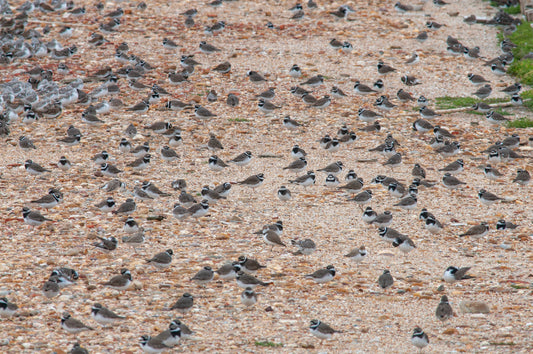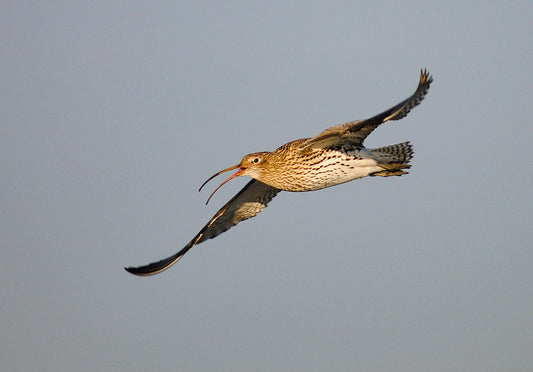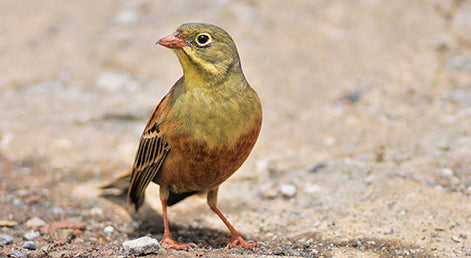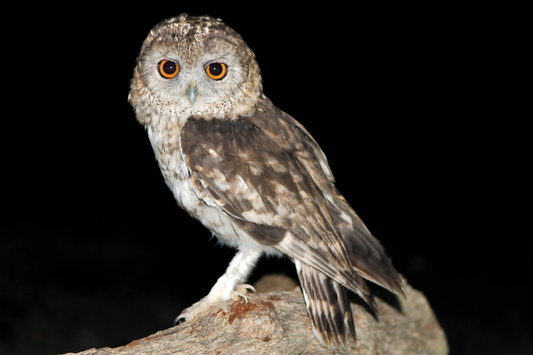You may hear the following words used when describing bird sounds (or indeed any sounds). Learning what they mean and how to use them will help you when describing to others what you heard, which will ultimately help you learn bird sounds more easily.
Adapted from The Sound Approach to Birding, by Mark Constantine (2006)
Tone
Often described as the general character or quality of a bird’s sounds – or the sound equivalent to visual ‘jizz’ (general impression of size and shape).
Timbre
A specific word for the texture or spectral colour of a sound (squeaky, buzzing, shrill, etc.), independent of its pitch or rhythm. Describing tone or timbre, whether it is the general character of a bird’s voice, or just one particular note, is as hard as describing a colour, a smell or a taste.
Frequency
Technically speaking, frequency is a measure of the number of sound waves occurring during a given stretch of time. High frequencies create sounds we hear as ‘high-pitched’, and low frequencies sounds we hear as ‘low-pitched’. Frequency is a measurement, in Hertz (Hz), of sound wave cycles per second (1,000 per second makes one kilohertz or 1 kHz). The human ear can receive a wide range of frequencies, and good hearing can register frequencies from as low as 20 Hz up to around 20 kHz. At high and low extremes, a sound must be very loud for us to hear it. Our hearing is at its most sensitive between 400 Hz and 3 kHz, a range roughly equivalent to the upper half of the piano. Most bird sounds fall within our most sensitive range. Even bird vocalisations that go above that do not actually go much higher than 8 kHz and are well within most people’s upper hearing limit.
Pitch
Used to describe how you hear frequency. Bat sonar, for example, has measurable frequencies, but as long as they are beyond our range of hearing they have no pitch that is audible to a human.
Rhythm
The rhythmic pattern within individual songs or calls is of crucial importance in identifying bird sounds. Equally important is the rate at which a sound is delivered, and whether or not this is constant. This applies at different levels, including both the tempo of song or call delivery over a longer stretch of time, and how rapidly the notes of a particular chuckling or rattling sound are repeated. Bear in mind that the silent gaps between sounds can be as relevant as the sounds themselves. In everything from flight calls to complex songs, paying attention to rhythm can provide the key in recognising sounds.
Timing
Timing calls or songs in the field, or from recordings, can make it easier to recognise more subtle differences in rhythm. Sounds and the gaps between them can be timed with a stopwatch. Sometimes, just counting notes as fast as possible can give a useful, if rough, guide, although it can be difficult to count more than six or seven notes in a second. Most call notes are over in a fraction of a second, so beware of over-estimating the length of a sound.
Loudness
In the same way that pitch relates to frequency, loudness is a word for how we perceive intensity, which is measured in decibels or dB. How loud a sound seems depends not only on the effort put into making it, but also on its pitch, and the prevalent acoustics, including any other sounds audible at the same time.
Loudness is shown in a sonagram by the depth of black in the tracing. When the sonagram is set to ‘greyscale’, a quiet whistle will show as a narrow, light grey line, whereas a loud one will be thicker and blacker. When judging loudness in a sonagram, it is wise to use the darkness of the tracing comparatively – and thus judge the louder parts of a song or call only in comparison with other parts of the same sonagram. A sonagram from another recording may not have been made from the same distance, or with the same equipment.

























